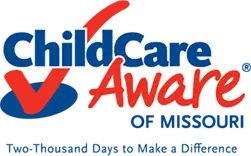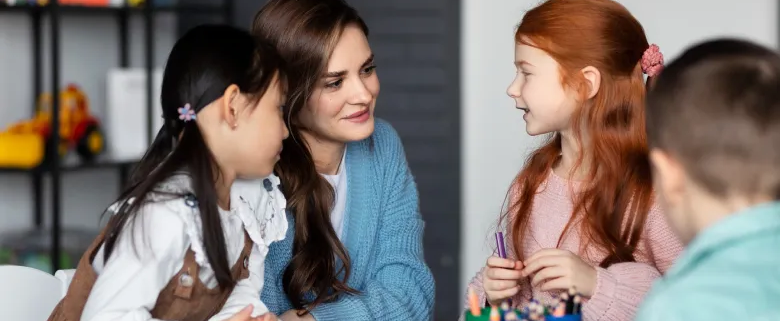Ensuring Safety First: A Checklist for Childcare Providers
Safety Should be the first priority of any childcare setting, and childcare providers shoulder the enormous responsibility of ensuring a secure environment for every child in their care. Whether in a daycare, preschool, or any other childcare facility, maintaining the safety of children is a priority that requires continuous effort and diligence. Given the vulnerability of young children, it is crucial to have a well-thought-out safety plan that covers all aspects of the childcare environment.
The goal of this blog is to provide a comprehensive safety checklist that helps childcare providers create and maintain a safe, nurturing space for children. From childproofing the environment to managing visitor access, this guide will outline critical safety protocols that every provider should follow.
Childproofing the Environment
Childproofing a facility is the first and most essential step in ensuring the safety of children. Childproofing measures are designed to prevent accidents and injuries, making the environment safe for exploration and play.
1. Secure Furniture and Heavy Items
Large pieces of furniture such as bookshelves, dressers, and TV stands should be anchored to the wall to prevent them from tipping over if a child attempts to climb on them. It’s important to also secure heavy items like televisions or display screens, which can cause serious injury if they fall.
2. Cover Electrical Outlets
Exposed electrical outlets are a significant hazard for young children. Childproof covers or outlet plugs should be installed to prevent children from sticking objects into the outlets. Additionally, all electrical cords should be tucked away and secured to avoid tripping hazards.
Staff Background Checks:
The staff or caregivers are the individuals who will spend the most time with the children after their parents. Therefore, it’s crucial for a childcare facility to hire the best caregivers with a strong track record and background. Comprehensive background checks and proper training are essential steps in ensuring that responsible, safety-conscious staff are hired.
1. The Importance of Background Checks
Thorough background checks are essential in verifying the credentials and history of potential employees. This includes checking for criminal records, past employment, and any history of abuse or neglect. These checks help ensure that only individuals with a clean background are allowed to work with children.
2. Training in CPR, First Aid, and Safety Protocols
Every staff member should be trained in CPR, first aid, and safety protocols. In the event of an emergency, having a team that knows how to respond can save lives. Regular refresher courses should also be conducted to ensure that skills are up-to-date.
Emergency Preparedness
Childcare providers must be prepared for emergencies such as fires, severe weather, or medical incidents. Having an actionable plan in place can mitigate risks and ensure swift responses during emergencies.
1. Clear Evacuation Plans and Drills
An evacuation plan should be clearly posted in multiple locations around the facility, outlining escape routes and assembly points. All staff should be familiar with the plan, and regular emergency drills should be conducted with the children. Practicing drills helps ensure that children know what to do during an actual emergency without panicking.
2. First Aid Kits and Emergency Supplies
Each classroom or activity area should have a well-stocked first aid kit that includes essential supplies like bandages, antiseptic wipes, gauze, and emergency contact numbers. Additionally, emergency kits should contain flashlights, batteries, water, and non-perishable snacks in case of extended shelter-in-place situations.
Health And Hygiene Procedures
Health and Hygiene Procedures
Maintaining proper health and hygiene protocols helps prevent the spread of illness and keeps children healthy. Childcare providers should establish clear procedures for handwashing, sanitation, and handling sick children.
1. Handwashing and Sanitation
Children and staff should wash their hands frequently, especially before meals, after using the restroom, and after outdoor play. Handwashing stations with clear instructions should be available, and hand sanitizer should be used when soap and water are unavailable.
2. Handling Sick Children and Health Records
Childcare providers should have protocols in place for managing sick children. This includes promptly isolating children who exhibit symptoms of illness, notifying parents, and keeping up-to-date health records for each child. Following guidelines from health authorities, such as the CDC, ensures compliance with best practices.
Safe Sleep Practices (for Infant Care)
Infant care requires special attention, particularly when it comes to sleep safety. Following safe sleep guidelines is crucial in preventing accidents like Sudden Infant Death Syndrome (SIDS).
1. Best Practices for Infant Sleep Safety
Infants should always be placed on their backs to sleep on a firm, flat surface with no soft bedding, pillows, or toys. The crib should meet safety standards and be free of gaps or hazards that could trap a child. Proper supervision and monitoring devices can further ensure the safety of sleeping infants.
Outdoor Safety
Outdoor play is essential for children’s development, but it also presents unique safety challenges. Proper supervision and playground maintenance are key to ensuring a safe outdoor environment.
1. Playground Safety Checks
Before children play outside, the playground and outdoor equipment should be inspected for hazards such as broken equipment, sharp edges, or loose bolts. Make sure that any playground equipment is age-appropriate and well-maintained.
2. Appropriate Ground Materials
Surfaces like rubber mats, sand, or wood chips should be used under play structures to cushion falls and prevent injuries. Hard surfaces such as asphalt or concrete should be avoided in play areas.
Creating an outdoor safety checklist for playground equipment inspections can help staff ensure that all areas are safe for children to enjoy.
Pickup and Drop-off Procedures
Managing the transitions of pickup and drop-off can be hectic, but ensuring security during these times is critical. Childcare facilities should have strict procedures in place to prevent unauthorized pickups.
1. Secure Sign-In/Sign-Out Systems
Parents or guardians should be required to sign children in and out using a secure system. This can be done digitally or via physical logs. Identification should be verified before releasing a child, and only authorized individuals listed in the child’s file should be allowed to pick them up.
2. Staff Monitoring of Transitions
Staff should actively monitor the drop-off and pickup areas to ensure that children are safely transitioned to and from the care facility. Having a designated staff member at the entry point during these times can help prevent confusion or security breaches.
Visitor Management
Managing who enters the childcare facility is another essential aspect of maintaining safety. Visitor management systems should be in place to monitor and control access to the facility.
1. Procedures for Visitors
All visitors should be required to sign in and present identification before entering the facility. Access points should be closely monitored, and visitors should be escorted by staff during their visit.
2. Monitoring Access Points
Installing security cameras and ensuring that all doors and gates are locked during operating hours will help prevent unauthorized individuals from entering the premises.
Conclusion
Safety in childcare settings is absolutely essential and cannot be compromised. By establishing and enforcing a range of rigorous safety measures, including but not limited to ensuring that the environment is childproof and carefully regulating visitor access, childcare providers in Missouri can establish a safe and supportive setting where children can engage in learning, play, and development.




